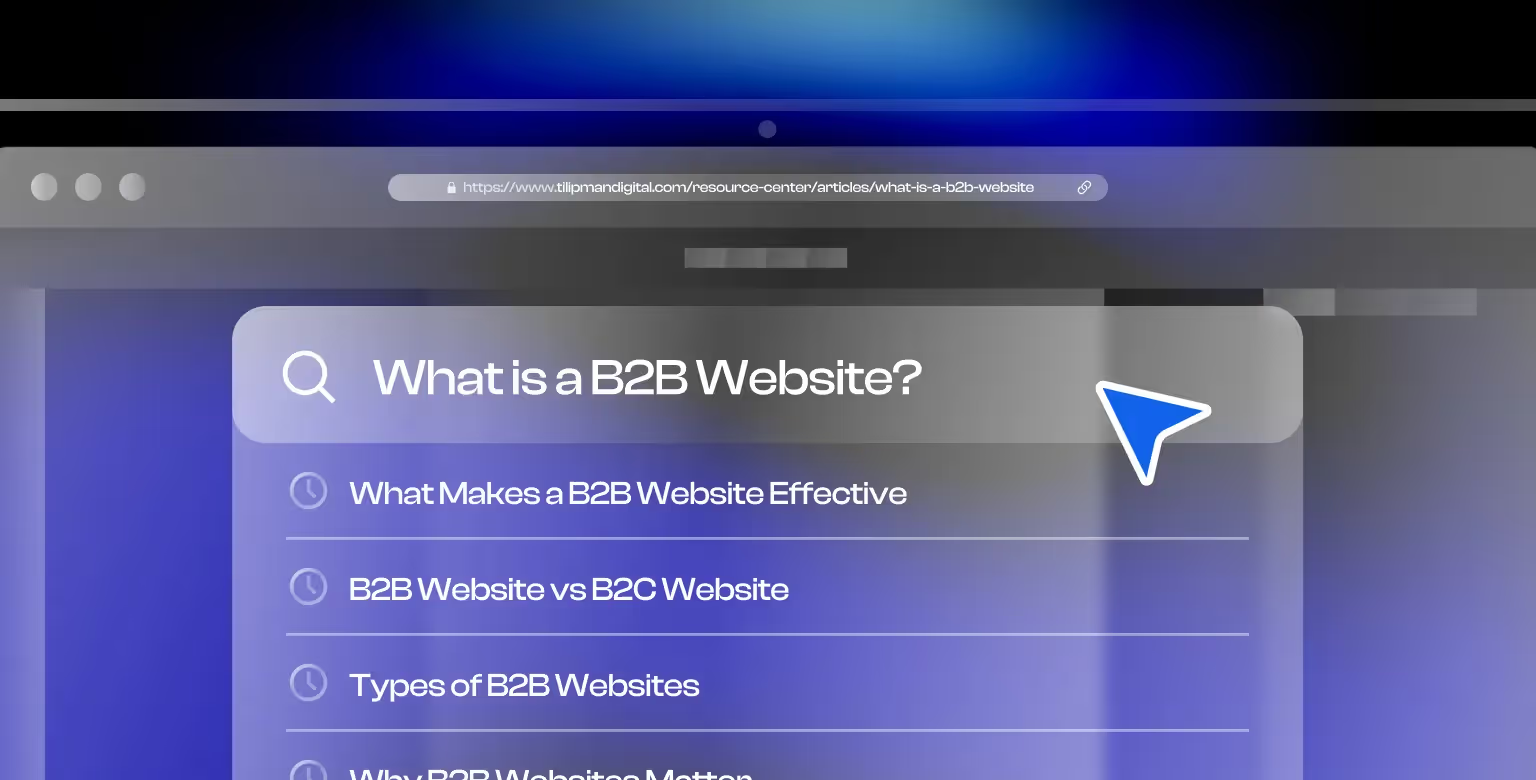What Makes a B2B Website Effective: Definition & Core Purpose
A B2B website is the backbone of how companies sell to other businesses online. Its job is to attract the right visitors, communicate value clearly, and convert interest into qualified leads—often across long sales cycles and multi-stakeholder decision-making processes.
Unlike B2C websites that are optimized for quick, emotion-driven purchases, B2B sites are built for teams. They prioritize clarity, depth, and proof over flash. Content is structured to answer business-critical questions, build trust, and guide different personas through the funnel—whether it's a CTO researching technical specs or a procurement lead comparing vendors.
High-performing B2B websites aren’t just informative. They’re designed to reduce friction, drive conversions, and support both inbound and outbound efforts. That means clean navigation, clear CTAs, and strategic content—from use cases and testimonials to pricing breakdowns and integration details.
Done right, your B2B website works like a 24/7 sales assistant: educating visitors, qualifying intent, and prompting action at the right time. It's not a static brochure—it’s a growth engine.
B2B Website vs. B2C Website: Key Differences
The primary difference between B2B and B2C websites lies in the audience they serve. B2B websites target businesses, while B2C websites are built for individual consumers. This core distinction affects nearly every aspect of the website—from structure and content to user experience and calls to action.
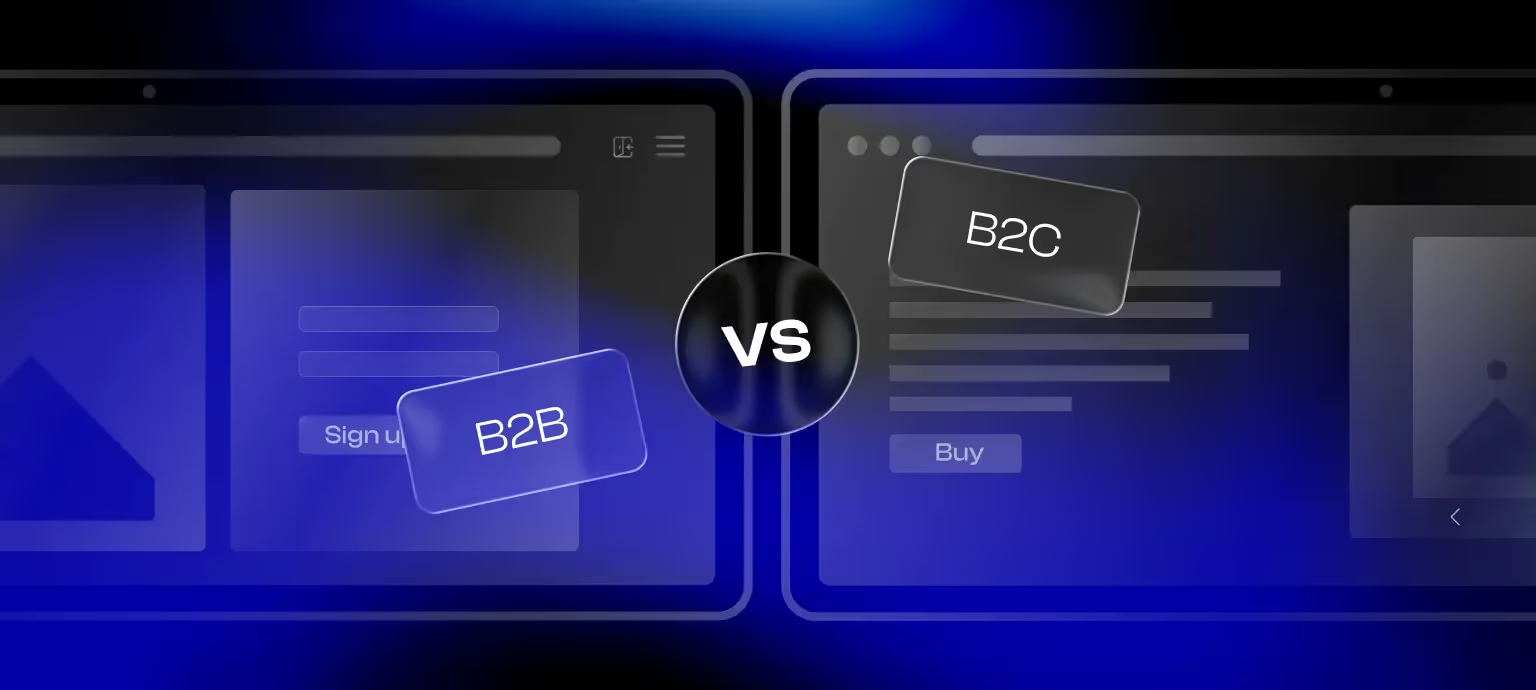
Audience and Buying Behavior
B2B buyers are often part of a team, have set budgets, and need internal approval. They spend more time researching and comparing options. B2C buyers, on the other hand, usually make faster decisions and often act on emotion or impulse.
Content and Messaging
B2B websites focus on clear value propositions, in-depth product details, and use-case explanations. Messaging is logical, data-backed, and often targeted to specific roles like CTOs, CMOs, or operations managers. B2C sites lean toward benefits, lifestyle appeal, and emotional triggers.
Design and Functionality
B2B sites prioritize simplicity, clarity, and efficient navigation. Visitors want to find specs, case studies, and pricing without distraction. B2C sites tend to be more visual, with immersive experiences and frictionless checkout flows.
Conversion Goals
B2B conversions usually mean a form submission, quote request, or demo signup—actions that feed into a longer sales process. B2C conversions often aim for immediate purchases.
Sales Cycle
The B2B sales cycle can span weeks or months and involves multiple stakeholders. B2C purchases often happen in minutes or hours.
Understanding these differences is critical when designing a site that speaks directly to your target audience and moves them to action.
Types of B2B Websites: SaaS, E-commerce, Marketplaces, and More
B2B websites can take different forms depending on the business model and target customer. Each type serves a distinct function and requires a tailored approach to content, structure, and conversion.
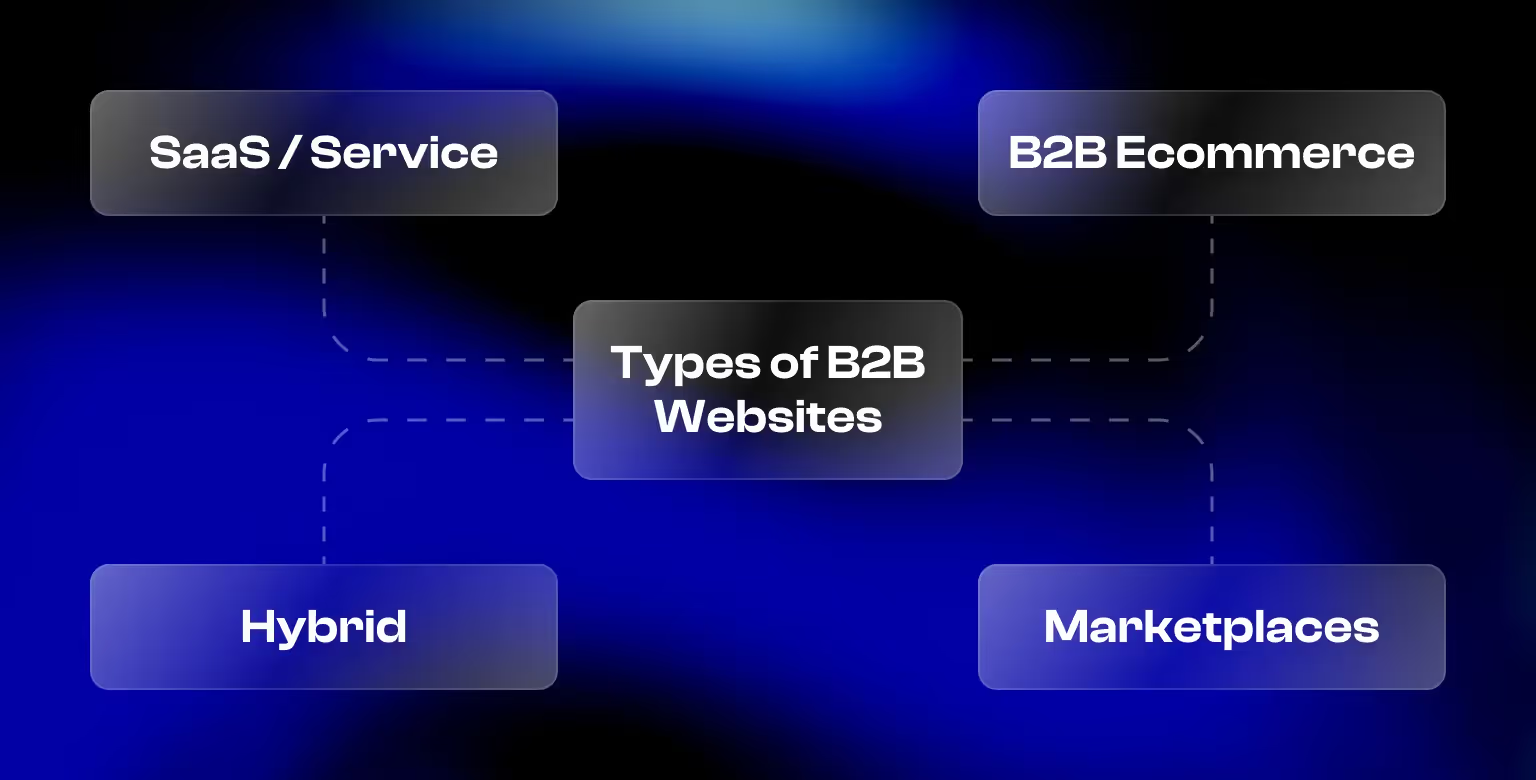
B2B E-commerce Websites
These platforms allow businesses to place bulk orders, request quotes, or manage procurement directly online. Examples include wholesalers, manufacturers, and suppliers. Key features often include account logins, tiered pricing, and custom catalogs.
Example: Alibaba – buyers can browse products in bulk, contact suppliers, and request quotes.
B2B Service and SaaS Websites
These sites are built to convert curious visitors into qualified leads. Instead of selling products directly, they educate, qualify, and guide decision-makers toward demos, trials, or contact forms.
Example: Synthflow is an AI voice automation platform that helps enterprises deploy human-like voice agents to handle customer calls at scale. Their website is a textbook B2B SaaS asset because it:
- Positions clearly: From the hero section, it’s obvious what Synthflow offers and who it’s for.
- Solves enterprise pain points: It addresses latency, multilingual support, cost-efficiency, and compliance - all top concerns for B2B buyers.
- Supports every funnel stage: Use cases, technical overviews, testimonials, and CTAs guide buyers from interest to action.
- Builds trust fast: Synthflow showcases security credentials, integrations, and case studies with quantifiable results - key for convincing stakeholders in high-stakes deals.
The result? A B2B website that does what good sales collateral used to — but automated, interactive, and available 24/7.
B2B Marketplaces and Directories
These sites connect multiple vendors with potential buyers. They often act as aggregators for industry-specific services, helping businesses discover and compare providers.
Example: Thomasnet – a directory for industrial suppliers where businesses can find vetted manufacturers and service providers.
Hybrid Models
Some B2B companies blend e-commerce and service models. For example, a software company might have a self-service product pricing page with options to request custom quotes. To design such a critical page effectively, it’s helpful to learn from pricing page examples of top SaaS companies
The structure and design of the website should reflect the business model and support the buyer journey accordingly.
Why B2B Websites Matter: Business Benefits and Strategic Value
A strong B2B website is more than a digital brochure—it’s a growth engine. For many prospects, it’s the first impression of your business and a key part of the way B2B buyers evaluate and make decisions.
Build Credibility and Trust
B2B buyers are discerning. They expect professionalism, clear messaging, and proof of capability. A well-structured website helps you meet the evolving expectations of B2B buyers who demand frictionless digital experiences—even for high-ticket sales.
Drive Inbound Opportunities
Most buyers research online before ever reaching out to sales. A content-rich B2B website ensures your company can be discovered through search and guides visitors toward conversion through demo forms, quote requests, or contact pages.
Clarify Complex Offers
B2B offerings are often technical or tailored. Your website helps break down those complexities into understandable value—without resorting to jargon—so buyers can quickly grasp what you do and why it matters.
Support the Sales Funnel
At every stage of the sales cycle, your website plays a role—educating leads at the top, building trust in the middle, and providing CTAs that prompt bottom-of-funnel actions like bookings or form submissions.
Strengthen Brand Positioning
Your website shapes how your brand is perceived. In high-consideration environments, your visual identity, structure, and content must reflect the expertise and authority your audience expects.
A great B2B website helps you get found, get understood, and get chosen.
Key Features of a High-Converting B2B Website
Not all B2B websites are built to perform. The best-performing high-converting websites share common traits that guide users, establish trust, and drive qualified actions.
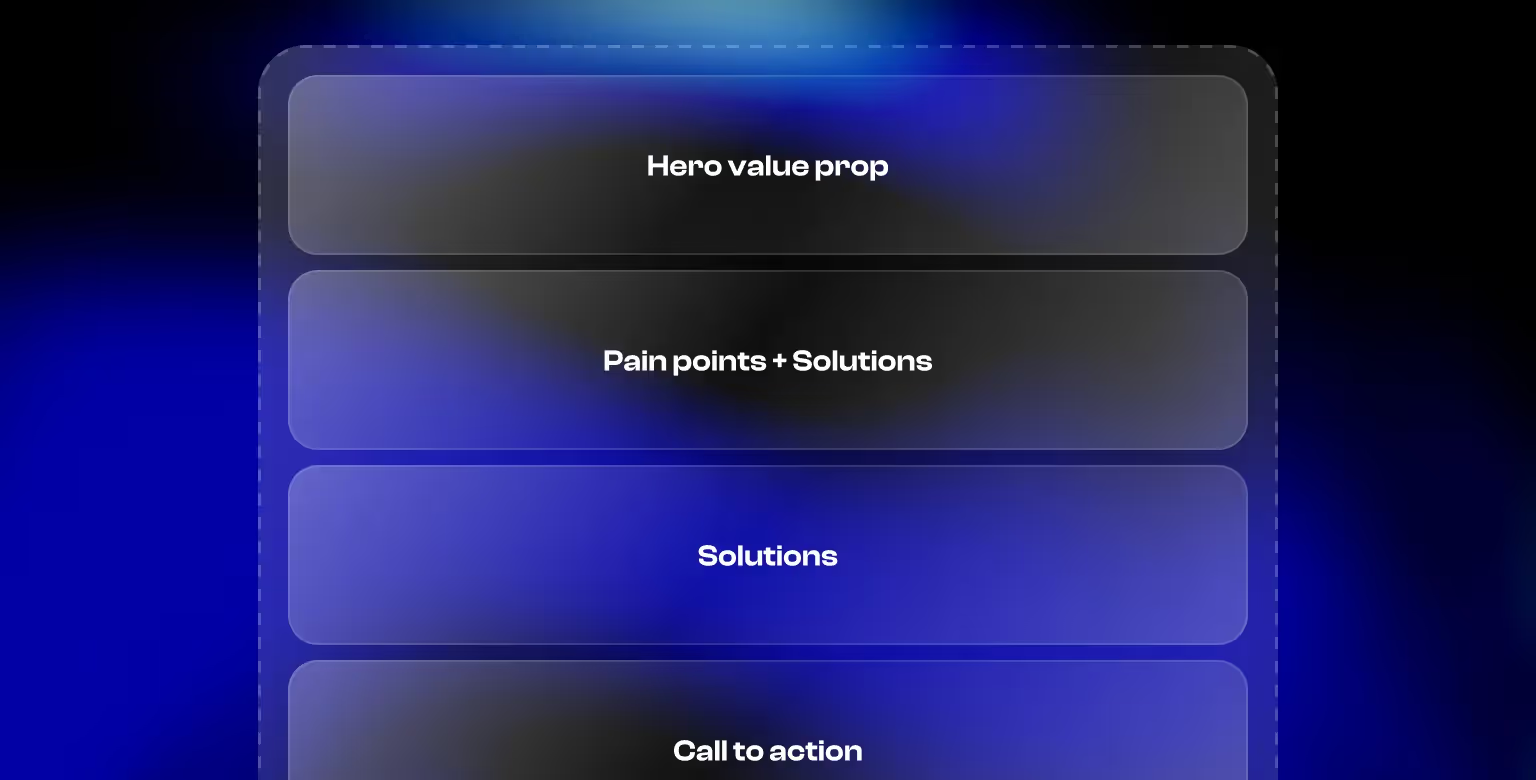
Clear Value Proposition
Visitors should understand what you do and why it matters within the first few seconds. A strong headline, subheadline, and supporting copy help communicate value immediately.
Focused Navigation and Page Structure
Make it easy for different audiences—decision-makers, users, and influencers—to find what they need. Logical menus, breadcrumbs, and page hierarchies help users navigate without friction.
Conversion-Oriented CTAs
Calls to action should be clear, specific, and placed throughout the site—not just on the contact page. Think demo requests, quote forms, or newsletter signups with contextually relevant copy.
Educational Content
Include case studies, blog posts, whitepapers, or videos to help buyers research and self-educate. This also supports SEO and builds authority in your space.
Trust Builders
Client logos, testimonials, certifications, and data privacy assurances reinforce credibility. In B2B, where stakes are high, buyers need proof before they commit. For an in-depth look at how buyer confidence is driven by detailed reviews over brief testimonials, see TrustRadius’s Building Buyer Trust: Review Quality Report.
Mobile Optimization
Even in B2B, many buyers browse on mobile. Your site should load fast, adapt to different screen sizes, and maintain functionality across devices.
Technical Performance
Fast load times, accessible markup, semantic HTML, and clean code all contribute to SEO and usability. Don’t make users wait or struggle to engage.
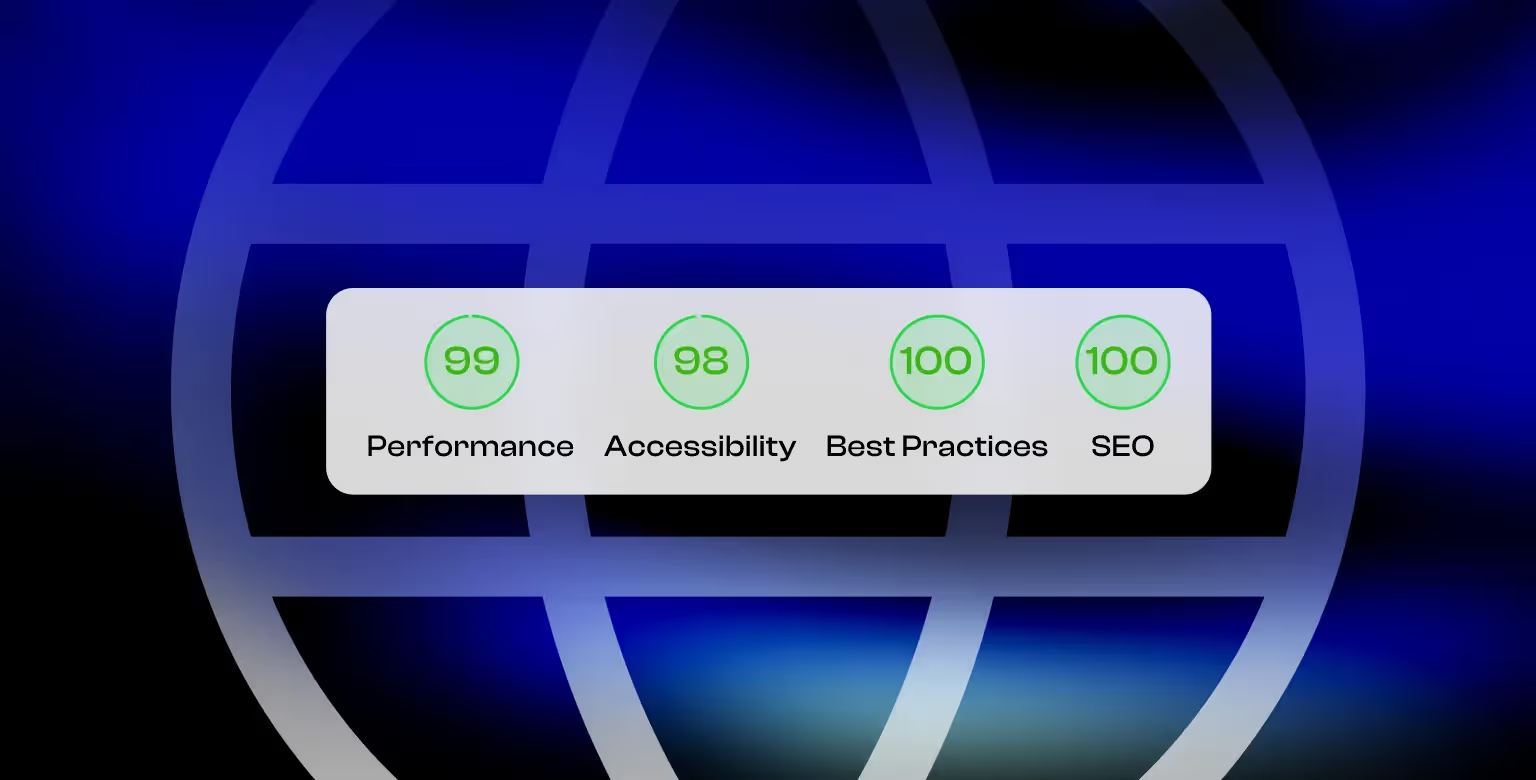
The goal isn’t just to look good—it’s to support every part of the B2B buying journey with clarity and confidence.
How to Plan a Winning B2B Website Strategy
An effective B2B website doesn’t start with design—it starts with strategy. Clarity at this stage sets the direction for structure, content, and performance. For a deeper dive, see our full guide on B2B Website Strategy.
Define Your Business Goals
Clarify what you want the website to accomplish. Common goals include lead generation, demo bookings, product education, or partnership outreach. Each goal shapes the site’s structure and key pages.
Identify Your Audiences
Most B2B websites serve multiple personas—decision-makers, end users, procurement teams. Each has different needs. Map out their goals and questions so your site can speak to all of them without confusion.
Audit Your Content
Take stock of what exists and what’s missing. Do you have a clear value prop? Relevant case studies? A blog or resource hub? A strategic site plan includes content at each stage of the buyer journey. “You don’t need 50 pages to be effective. Instead, focus on building high-impact business website using pages every website needs: Home, About, Product/Services, Use Cases, Pricing, Resources, and Contact.”
Prioritize Your Pages
You don’t need 50 pages to be effective. Focus on the high-impact ones: Home, About, Product/Services, Use Cases, Pricing, Resources, and Contact. Add deeper pages only when there’s a clear reason.
Map the Funnel
Plan how users move from awareness to action. Guide them through logical next steps—from problem identification to solution education to demo booking or contact.
Consider Integrations Early
Think about what tools the site should connect with—CRM such as HubSpot, marketing automation, analytics, support. Align with your tech stack upfront so the site can work as part of your broader go-to-market system.
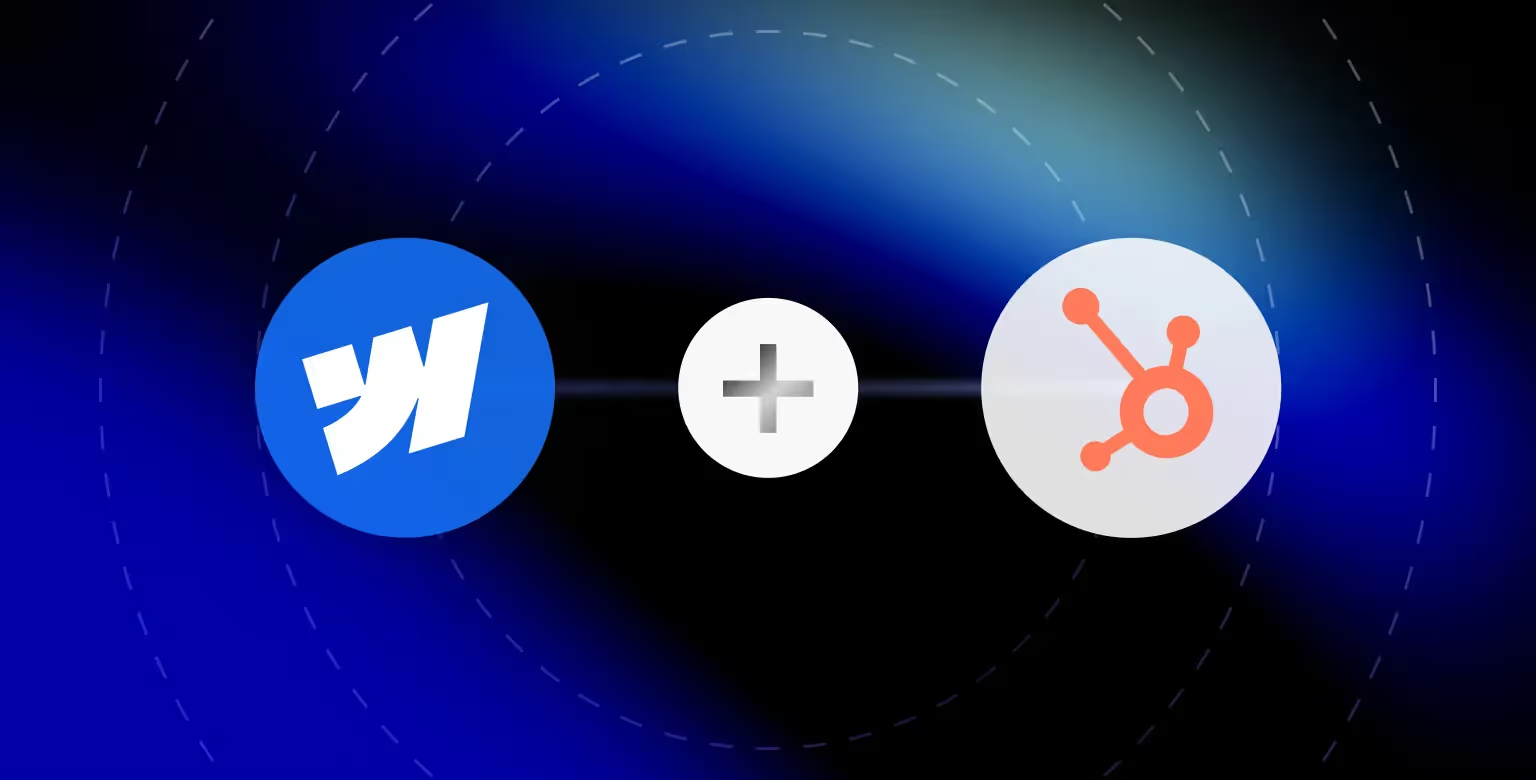
Strategy shapes execution. Without it, even the best designs fall flat.
B2B Website Design and UX Best Practices That Drive Results
Design helps B2B websites look good and work well. Good UX reduces friction, builds trust, and drives conversions.
If you're looking for expert help, a specialized B2B web design agency can translate strategy into high-converting UX.
Prioritize Clarity Over Cleverness
Avoid abstract language and visuals. Visitors come to your site to solve problems—so make your message obvious:
- Use clear, straightforward copy
- Structure content with clean layouts and visual hierarchy
- Label navigation items predictably (e.g., Product, Pricing, Resources)
Make Navigation Effortless
Use a well-structured main menu with predictable labels like Product, Pricing, and Resources. Include breadcrumbs, search functionality, and consistent layouts across pages to reduce cognitive load.
For smaller websites, a standard navigation bar is usually enough. But if your site includes a broad range of content, take a look at these mega menu examples. They show how to organize complex navigation in a way that’s both intuitive and conversion-friendly.
Optimize for Conversion Paths
Guide users toward action. Place primary CTAs (e.g., demo, contact, quote) at key scroll points. Use secondary CTAs (e.g., learn more, download guide) to keep colder visitors engaged.
Leverage Visual Hierarchy
Use type scale, color contrast, and spacing to guide attention. Important content should always be visible without users having to hunt for it.
Use Real Product Context
Show your product in use—not mockups on a laptop. Design for all users, including those using assistive devices using the best accessibility practices. Use semantic HTML, alt text, and readable contrast. If you’re selling software, use real UI in context. If you’re offering a service, show the result, not just the process.
Ensure Accessibility and Performance
Design for all users, including those using assistive devices. Use semantic HTML, alt text, and readable contrast. Minimize animations and optimize images to keep load times fast.
Keep Mobile in Mind
While many B2B users are on desktop, decision-makers also browse on mobile. Your layout, menus, and CTAs must adapt and perform on smaller screens.
A polished B2B website design isn’t flashy—it’s functional, fast, and focused on helping users find what they need and take the next step.
Proven SEO and Content Strategies for B2B Websites
Content drives visibility, trust, and conversion. Paired with SEO, it ensures your B2B website reaches the right buyers at the right time.
For fast-growing SaaS or AI companies, partnering with an SEO agency for tech startups can accelerate results by targeting the right terms with content that converts.
Create Content for Every Stage of the Funnel
Map content to awareness, consideration, and decision stages. Use blog posts and educational guides for early-stage traffic, case studies and product comparisons for mid-funnel, and demo pages or pricing info for bottom-of-funnel.
Use Keyword Research to Guide Structure
Build your sitemap and content calendar around search demand. Prioritize topics that solve buyer problems and include target keywords naturally in headings, URLs, and metadata.
Focus on Usefulness, Not Volume
You don’t need 100 blog posts. You need 10 that answer real questions and outperform competitors. Quality content builds authority and increases dwell time.
Optimize On-Page Elements
Each page should have a clear H1, relevant H2s, optimized meta title and description, internal links, and fast load times. Don’t forget alt text on images and semantic HTML structure.
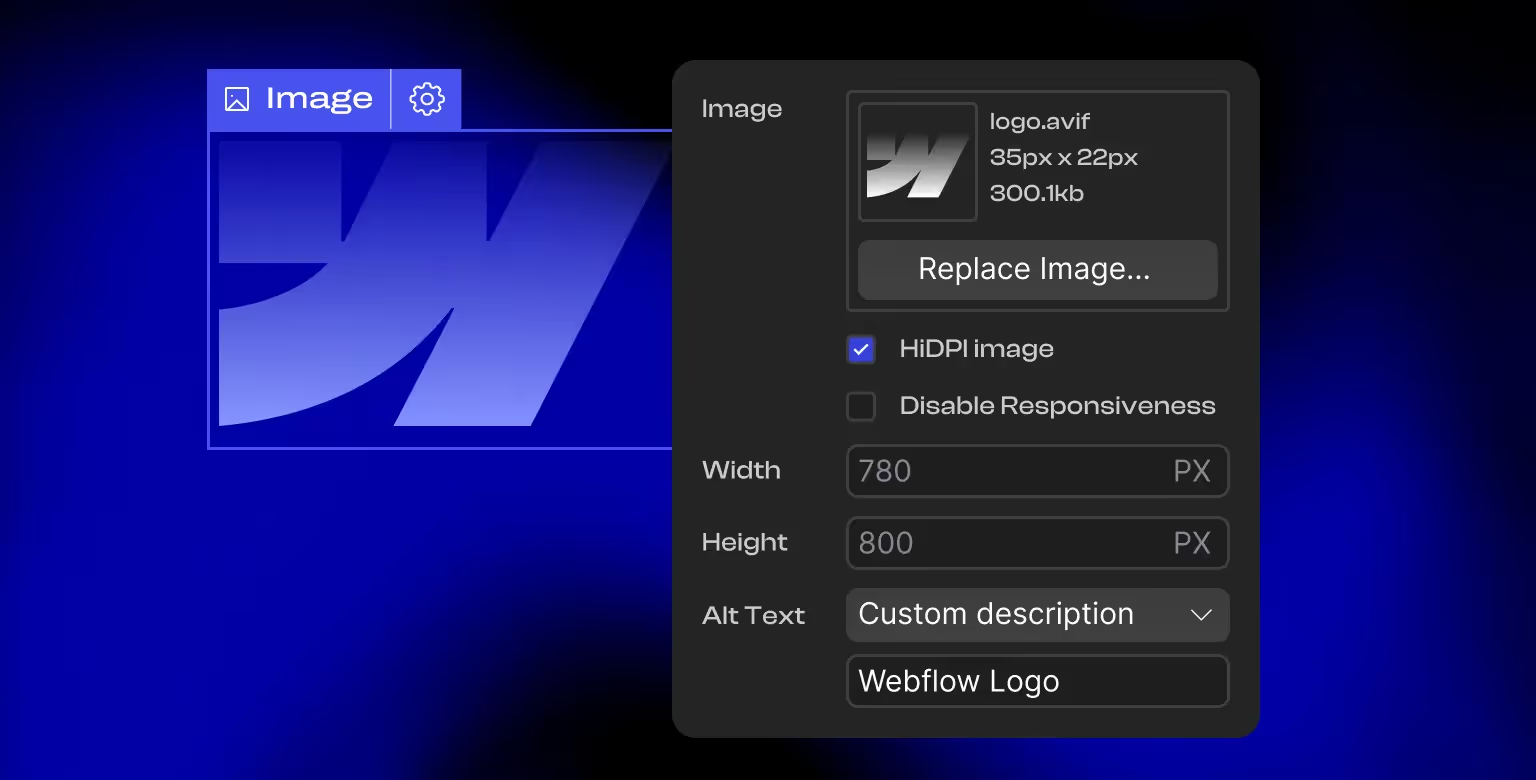
Keep Technical SEO Clean
Use clear URLs, avoid duplicate content, and implement structured data where needed. Use a sitemap and robots.txt to guide indexing, and run audits regularly.
Publish Case Studies and Customer Stories
Social proof helps convert traffic. Showcase specific results and quotes from real clients to build trust.
Build Internal Linking Hubs
Create strategic interlinks between product pages, use cases, blog posts, and resource centers. This helps users navigate and strengthens your site’s authority on key topics.
Great content gets found, builds confidence, and moves visitors closer to conversion. Pair it with sound SEO and your site becomes a growth channel—not just a brochure.
Lead Generation and CRO Strategies for B2B Websites
Traffic is meaningless without conversions. A B2B website should be built to turn interest into action.
Use Clear, Actionable CTAs
Place CTAs where intent is highest—hero sections, mid-scroll breakpoints, and page footers. Use specific labels like "Request a Demo," "Get a Quote," or "Talk to Sales" rather than vague ones like "Learn More."
Shorten the Path to Conversion
Reduce the steps it takes for a visitor to become a lead. Use short forms. Pre-fill data when possible. Avoid making users hunt for contact options.
Offer Multiple Conversion Points
Not everyone is ready to talk to sales. Include low-friction options like newsletter signups, content downloads, or webinar registrations to nurture colder leads.
Use Supporting Microcopy
Explain what happens after a CTA click. Reinforce trust by clarifying how soon someone will follow up, what info they'll receive, or how their data is handled.
Add Social Proof Near CTAs
Position testimonials, client logos, or case study links near calls to action to build trust at the point of decision.
Run A/B Tests on Key Pages
Test CTA placement, headline copy, page structure, and form fields. Use insights from tools like Google Optimize or Microsoft Clarity to iterate based on real behavior. For Webflow-specific split testing, our Optibase partnership gives us direct access to an official A/B testing platform, ensuring experiments run seamlessly on our clients’ sites.
If you're not sure what to test or how to interpret results, consider working with conversion rate optimization experts who specialize in B2B performance.
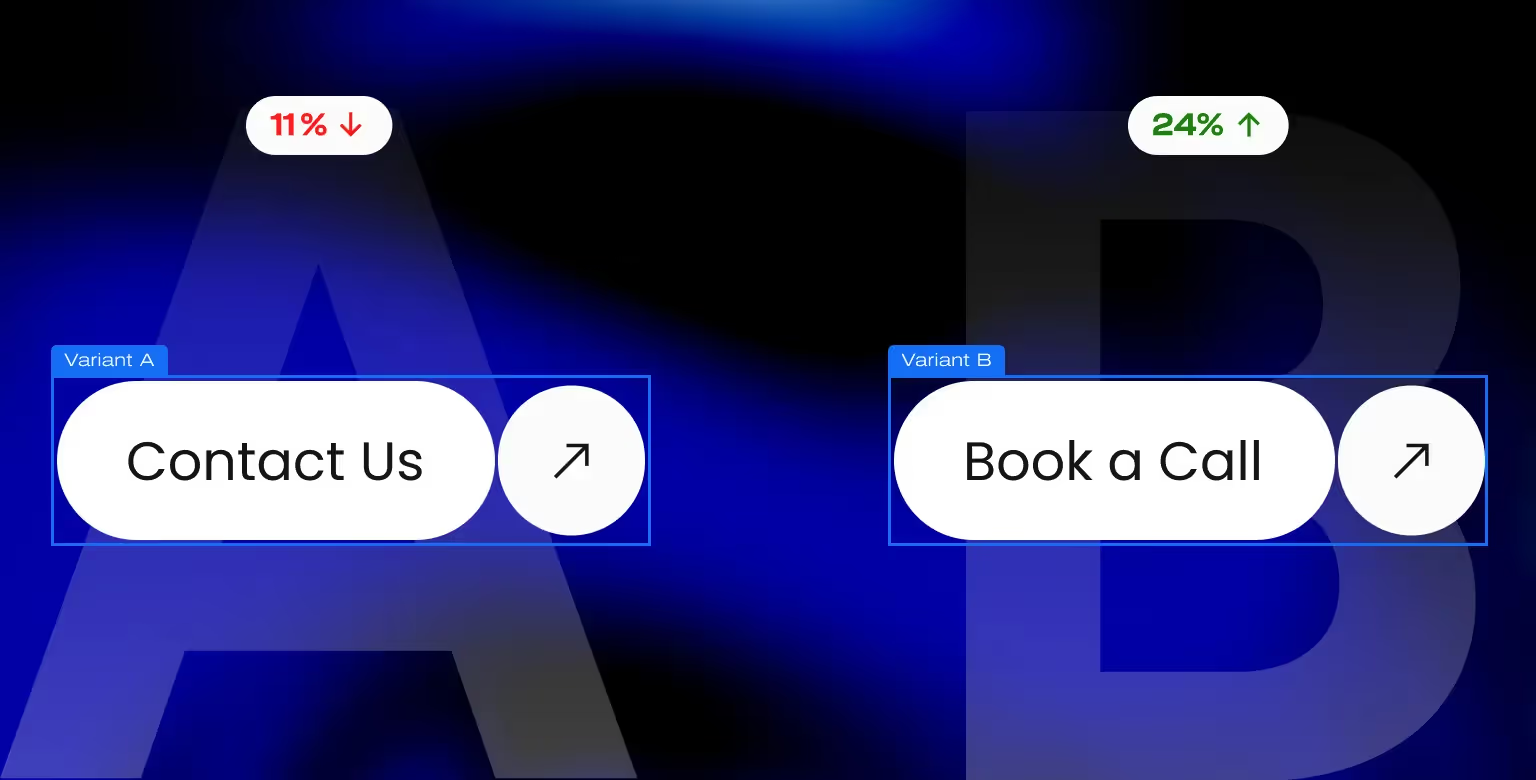
Track What Matters
Go beyond traffic. Set up conversion tracking for form submissions, CTA clicks, and scroll depth. Use this data to refine what works.
The goal isn’t just to collect emails—it’s to connect with qualified buyers. Your website should do that job with speed and clarity.
Examples of Top B2B Websites and What Makes Them Work
Seeing strong B2B websites in action makes it easier to understand what “good” looks like. These examples combine clarity, UX, and conversion focus.
Avarra AI
After partnering with Tilipman Digital, Avarra repositioned its platform with clear messaging, real product context, and strategic CTAs. The result: an average of 10 qualified leads per day. The site guides users through pain → solution → proof → action, using visuals and copy to remove friction.
HubSpot
HubSpot’s site combines clean design, intuitive navigation, and extensive content. Each product page includes feature breakdowns, benefit-focused copy, and compelling CTAs. Their resource hub is a prime example of content-led lead generation.
Notion
Notion’s business-focused landing pages are optimized for team use cases. Clear copy, minimal design, and in-context product visuals make it easy for business users to see how the tool fits their workflow.
Webflow
Webflow’s site is a showcase of product capability, but also a conversion engine. It blends strong CTAs, visual storytelling, and SEO-optimized content to drive inbound signups and education.
Stripe
Stripe demonstrates how technical products can be explained clearly. Their documentation, product overviews, and pricing pages are well-structured, clean, and focused on user needs.
Great B2B websites don’t look alike—but they all do the same job: communicate value quickly and move the right visitors toward action.
B2B Website FAQs: Common Questions Answered
What Is a B2B Website?
A B2B website is built to help companies sell products or services to other businesses. It informs, builds trust, and generates qualified leads—often across longer sales cycles and with multiple decision-makers involved.
How is a B2B website different from a B2C website?
B2B websites speak to business teams, not individuals. They focus on detailed information, proof points, and lead capture, while B2C websites are optimized for quick, emotion-driven purchases by consumers.
What are examples of B2B websites?
Strong examples include Avarra AI, HubSpot, Speculo AI, Webflow, Bland AI and Stripe. Each one demonstrates clear messaging, intuitive UX, and optimized conversion paths. Read our article to see best B2B websites and explore our case studies to see where our work fits into the equation.
What should a B2B website include?
Core elements include a clear value proposition, persona-specific messaging, social proof, strategic CTAs, mobile optimization, and fast technical performance. The goal is to inform and convert.
What is a good B2B website conversion rate?
Top-performing B2B websites convert around 5–10% of traffic into leads, though most average between 2–5%, depending on industry and funnel maturity.
Why is content important for B2B websites?
B2B buyers research before reaching out. Helpful, well-structured content—like case studies, use-case pages, and educational resources—builds trust and supports every stage of the buying journey.
How can I improve my B2B website?
Start by clarifying your value prop, optimizing CTAs, speeding up load times, and aligning content to buyer needs. Regular audits and A/B tests will help you refine what drives results.
A well-built B2B website should look good, educate, builds trust, and turn interest into action.


